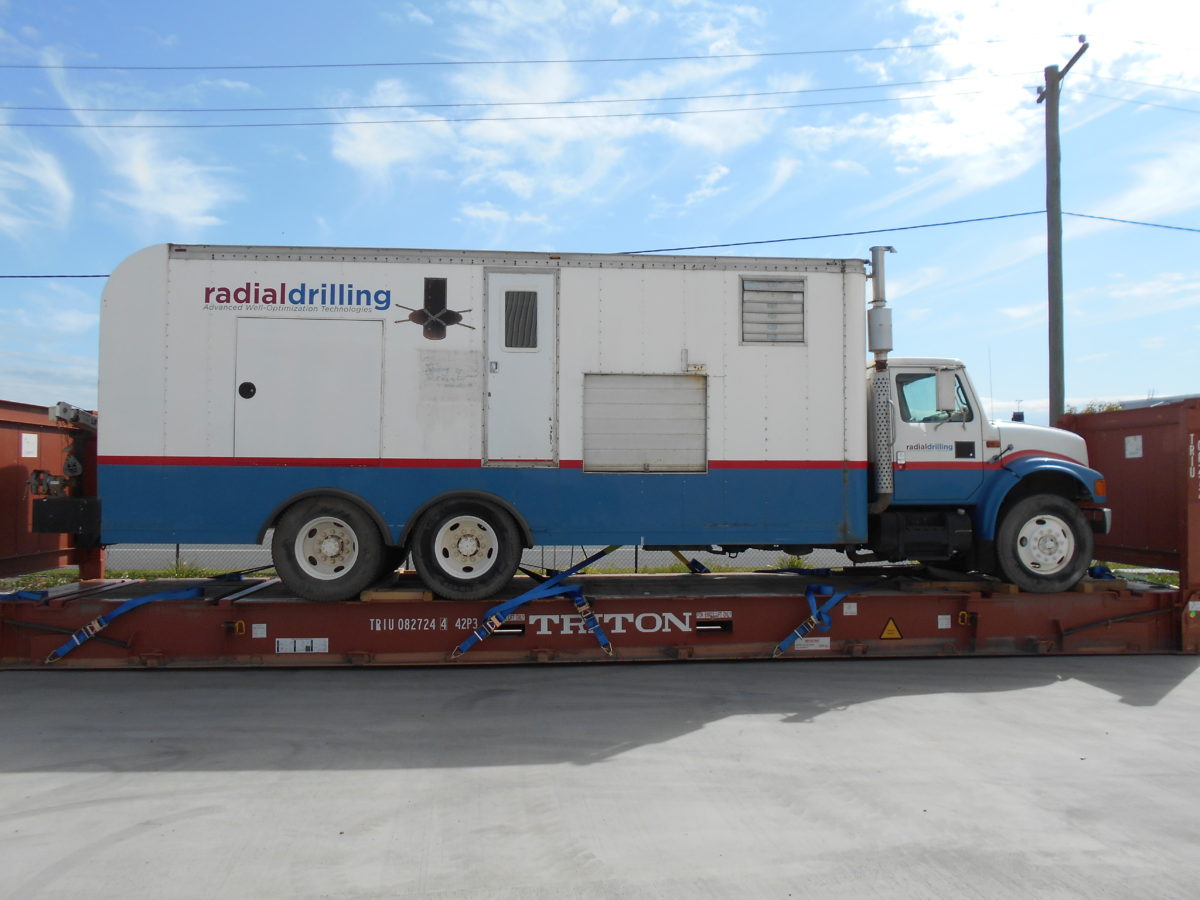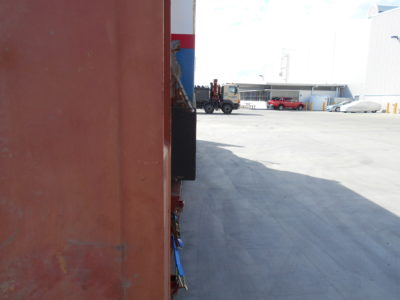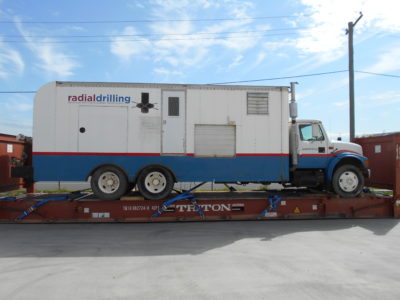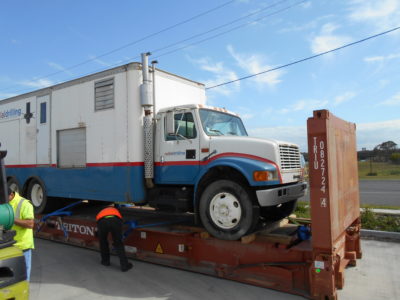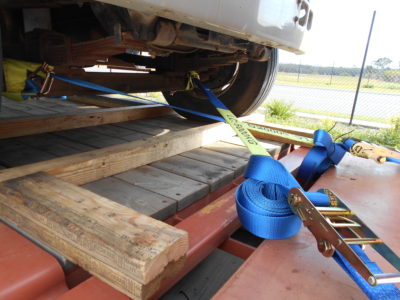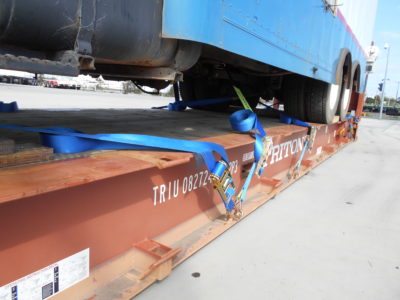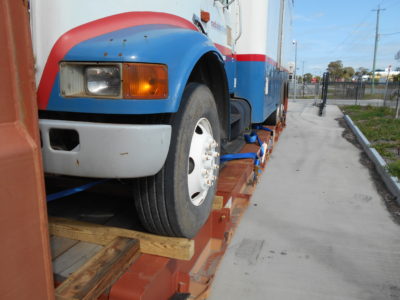When loading over width cargo onto flat racks it is important to ensure that the cargo is positioned as far as possible in the centre of flat rack longitudinally.
Quite often the cargo will be loaded down below on a ship to protect the cargo during the voyage, the majority of ships loading flat racks are container ships and are fitted with cell guides in the hold, the cell guides keep the containers in a vertical stack. The cell guides also assist the crane drivers when loading or discharging as the name implies they guide the containers in or out.
The majority of cell guides have about 100 mm clearance between each row which allows smaller over width cargo to be loaded below in certain cases, this is where making sure the cargo is centered and equally over width comes into play.
If the cargo is for example is 2,580 mm wide, standard 20/40′ flat racks are 2,400 mm wide which makes the cargo 180 mm over width, if the cargo is loaded onto a flat rack so as to be over width on one side the flat rack will not fit down below on the ship. Consequently making sure the cargo is centered will result in over width 90 mm each side and able to fit down the cell guides.
However there are occasions when the shipping line will specifically request that a flat rack is loaded with the over width on one side, this is usually done when a mixture of cargo is loaded on a non cellular vessel. If this is the case as an additional safety measure extra securing should be fitted to the cargo.
The photos below show the securing of a multi axle truck to a 40′ flat rack, the positioning of the polyester straps and ratchet load binders are critical in order to minimise transverse and longitudinal forces which can be quite robust when a vessel is rolling and pitching at sea.
You will note that in addition to the polyester lashings the tyres are chocked with timbers nailed to the flat rack deck in order to minimise movement and increase the safety of the cargo.


